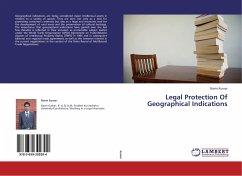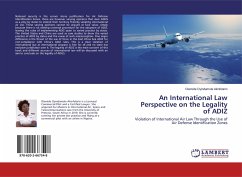
Legal Protection Of Geographical Indications
Versandkostenfrei!
Versandfertig in 6-10 Tagen
32,99 €
inkl. MwSt.

PAYBACK Punkte
16 °P sammeln!
Geographical indications are today considered major intellectual assets in relation to a variety of goods. They are seen not only as a tool for protecting consumer's interests but also as a legal and economic tool for the development of rural areas and the preservation of cultural heritage. The importance that geographical indications have gained over the last few decades is reflected in their inclusion as protectable subject matter under the World Trade Organization (WTO) Agreement on Trade-Related Aspects of Intellectual Property Rights (TRIPS) in 1994 and in subsequent bilateral and regiona...
Geographical indications are today considered major intellectual assets in relation to a variety of goods. They are seen not only as a tool for protecting consumer's interests but also as a legal and economic tool for the development of rural areas and the preservation of cultural heritage. The importance that geographical indications have gained over the last few decades is reflected in their inclusion as protectable subject matter under the World Trade Organization (WTO) Agreement on Trade-Related Aspects of Intellectual Property Rights (TRIPS) in 1994 and in subsequent bilateral and regional trade agreements as well as the immense interest in the current negotiations in the context of the Doha Round of Multilateral Trade Negotiations.












